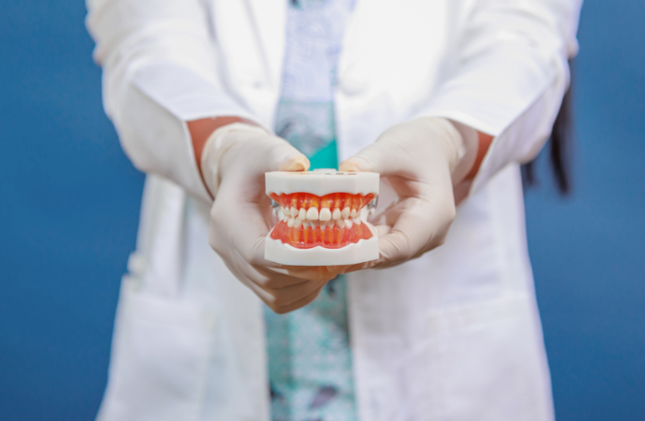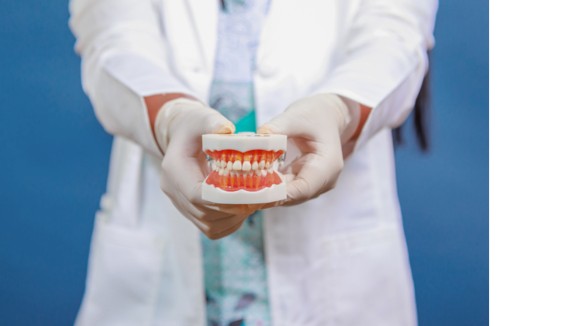Malocclusions Collection - Contribution Highlights
Published in General & Internal Medicine

Malocclusion, or misalignment of the teeth, can lead to oral health complications as well as changes in facial structure and speech problems. The etiology of malocclusions remains unclear, and although many are successfully treated through orthodontics, in some cases orthodontics may be difficult or insufficient. Therefore, it is important to increase our understanding of the biology of malocclusions and improve malocclusion diagnosis and treatment.
Contribution highlights
The maxillary central incisors are important for how our teeth look and function. In complex dental cases, understanding the position of these teeth in three dimensions is crucial. This study by Remsh Khaled Al-Rokhami and colleagues looks at how different orthodontic treatments affect the roots of these teeth. The researchers compared two types of braces: clear aligners and fixed appliances, in patients with Class I and II malocclusions (misalignments of teeth). They used CBCT (Cone Beam Computed Tomography) imaging to see how these treatments affect the incisive canal (IC), a bony canal near the roots of the incisors.
The study involved 60 patients, with 30 using clear aligners and 30 using fixed appliances. They measured changes in the IC and root positions before and after treatment. The results showed that fixed appliances caused more root resorption (loss of root structure) and closer proximity to the IC compared to clear aligners. The study concludes that personalized treatment planning is essential to minimize root damage, especially in complex cases. Future research could explore long-term effects and refine treatment strategies.
Orthodontic treatments aim to improve facial aesthetics, especially for people with Class II malocclusions, which involve a receding lower jaw and a prominent overbite. This study by Mohamed Najati Alsilq and colleagues explores the effects of two orthodontic devices, the conventional Twin Block (CTB) and the aesthetic Twin Block (ATB), on facial soft tissues. The researchers conducted a randomized controlled trial with 52 patients to compare these devices. They used cephalometric radiographs (X-rays of the head) to measure changes in facial angles and lip positions before and after treatment. Both devices improved facial profiles by reducing facial convexity and enhancing the mentolabial angle (the angle between the lower lip and chin). However, the ATB showed better results in improving the lower lip profile. The study concludes that both devices positively affect facial aesthetics, but the ATB may offer additional benefits for the lower lip area. Future research could explore long-term effects and involve multiple centers for broader validation.
Who is involved?
Guest Editors:
- Yunus Balel, Sivas Cumhuriyet University, Turkey
- Pang-Yun Chou, Chang Gung Memorial Hospital, Taiwan
- Gabriele Di Carlo, Sapienza University of Rome, Italy
- Anand Marya, University of Puthisastra, Cambodia
- Raymond Chung Wen Wong, National University of Singapore, Singapore
Internal Team:
- In-House Editor: Rachel Toth, Scientific Reports, USA
- Commissioning Editor: Jenny Knowles, Fully OA Brands, Springer Nature, UK
- Managing Editor: Aliya Anwar, Fully OA Brands, Springer Nature, UK
How can I submit my paper to a Collection?
Visit the Scientific Reports website to explore all Collections and learn how to submit your article.
Follow the Topic
-
Scientific Reports

An open access journal publishing original research from across all areas of the natural sciences, psychology, medicine and engineering.
-
A Collection of original research articles on malocclusions, including studies exploring their diagnosis, treatment, prevention, and biology.
Your space to connect: The Forensic dentistry Hub
A new Communities’ space to connect, collaborate, and explore research on Dentistry and Forensic Medicine!
Continue reading announcementRelated Collections
With Collections, you can get published faster and increase your visibility.
Obesity
Publishing Model: Hybrid
Deadline: Apr 24, 2026
Reproductive Health
Publishing Model: Hybrid
Deadline: Mar 30, 2026






Please sign in or register for FREE
If you are a registered user on Research Communities by Springer Nature, please sign in